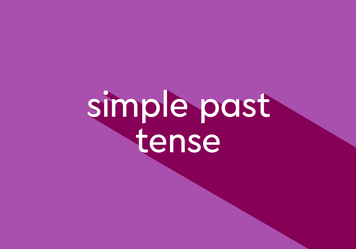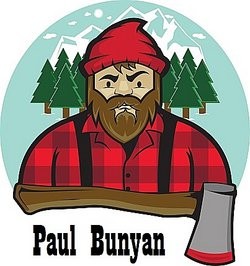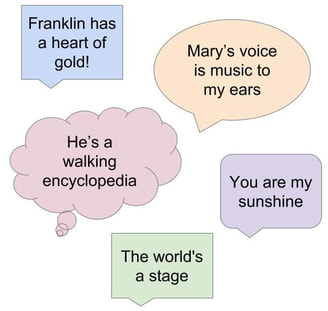 Happy Halloween, everyone! I promise to keep this short and snappy so you can focus on costumes and candy in the very near future. By starting a sentence with later, tomorrow, next week, or next year, you're setting yourself up to look toward the FUTURE TENSE. So as not to put you on the spot, I'll feature in all of today's sentences. -Later, I'll put on my fuzzy-eared headband and pass out candy. -Tomorrow, I'll meet with a student to review the latest draft of her college essay. -Next week, I hope to visit with friends. -Next year, who knows, I might be vacationing in Tahiti! Notice how "might" appeared in that last sentence? Might, could, should, and will can also indicate a switch to the unknown or planned FUTURE. A promise, pledge, or prediction clearly affect the the FUTURE, too. -I could have enough candy, if I don't eat it all before the kids arrive. -I should resist, but that's easier said than done. (only kidding) -I will walk extra laps around the block if I consume too much. -I pledge to keep creating these spoonfuls up to Spoonful #100, and possibly higher. I honestly can't conceive of a book being written entirely in the FUTURE TENSE. But whether your story is narrated in PRESENT or PAST, feel free to sprinkle in some FUTURE TENSE sentences. So look toward the FUTURE and make plans for you and your characters. Go forth and (safely) have a blast!! Sincerely, Laura F. Cooper
1 Comment
 Writers and readers alike are more familiar and comfortable with this tense. Drumroll, please! PAST TENSE is the subject of today's spoonful. How can you tell if a book is written in the PAST TENSE? First, examine the verbs in the narration.
--Were and was are PAST TENSE forms of the verb "to be." Here's a simple example sentence which tells, not shows: John was happy. --Scored and jumped are two PAST TENSE action verbs. Abra-Cadabra! Now the sentence shows, not tells. John scored the winning touchdown and jumped for joy. Next, examine the tense of the dialogue tags. Remember that dialogue is usually written using PRESENT TENSE, but the tags must reflect the tense of the narration. --Said (the PAST TENSE of say and says) is the most popular dialogue tag and barely registers to readers. Books for younger readers use said a lot! --Whispered and yelled are descriptive dialogue tags (and also active verbs), but stick out to readers. Here's my advice: use them sparingly and alternate them with action tied to the character. The sentences below demonstrate three different ways to identify who's talking. "Don't forget to turn off the light after the movie," Mom said. "I have a juicy secret," Juanita whispered to her pal Alexis. Andy scratched his chin. "I don't have a single clue." (Are you interested in learning more about show, don't tell? Check out my post SHOW AND TELL FOR WRITERS on the Writers' Rumpus blog.) Writers want to know: when should we use PAST TENSE? Whenever we want to portray action or events that occurred in the past, whether recent or more distant. How does this work across different genres? For non-fiction: If the events you're writing about are documented and/or already occurred, PAST TENSE is appropriate. If events are currently unfolding, use PRESENT TENSE. For historical fiction: By definition, history refers to events from the past and historical fiction blends history with fiction! It would be unusual to read about a known historical character or event in anything but the PAST TENSE. For other types of fiction: PAST TENSE generally works, even with a mystery laden with tension or a horror story oozing with terror and dread. For a great example of nail-biting dread written in the PAST TENSE, check out the delightfully creeptastic MG novel SHADOW MAGIC by Joshua Kahn. Science fiction calls for the most PRESENT TENSE consideration, but either tense can be used effectively. Dialogue helps books feel current, even when narration is written in the PAST TENSE. It also reinforces relationships and action, and it also helps reveal personalities! This is especially true for characters other than the narrator, since you can only reveal what they say, not what they think. Last but not least, let's not forget flashbacks. As these reflect a character's memories of the past, they must be written in PAST TENSE. To learn how to effectively write flashbacks and determine when they're appropriate, check out my post FLASHBACKS: A TRIP DOWN MEMORY LANE on the Writers' Rumpus blog. Thanks for reading this spoonful! Next up: FUTURE TENSE. Sincerely, Laura F. Cooper  Don't let your confusion over verb tenses make you emotionally overwrought!! There are a dizzying number of verb tenses (from 6 to 12, depending who you believe), but writers are in luck! We only need to choose from the two main tenses, PRESENT and PAST. And guess what? Each (as well as FUTURE TENSE) will star in their own spoonful. First up (drumroll please): PRESENT TENSE!! Do you want to share information in "real time"? If so, PRESENT TENSE is for you. Book reports are written in PRESENT TENSE, as are blog posts and advertisements. I write my spoonfuls in PRESENT TENSE because my aim is to provide current and readily usable information. Is your story contemporary or set in another galaxy? Do you want readers to keep wondering how your story will unfold or to identify closely with the main characters? Consider writing narration in PRESENT TENSE. This tense is especially fitting when you wish to achieve edge-of-the-seat, nail-biting suspense with the fate of the main characters (and perhaps of the world) hanging in the balance. PRESENT TENSE works especially well with the 1st Person POV (Point of View) - when the narrator is a character in the story, typically the main character. (For more about the 1st Person POV, check out Spoonful 47.) Whether you choose PRESENT or PAST for your overall narration, dialogue should be written in PRESENT TENSE. Dialogue tags, however, should reflect the tense of the narration. SAYS and SAY are common PRESENT TENSE dialogue tags, while SAID is the most common PAST TENSE tag. ***Special note: When writing in PRESENT TENSE, you can't have a narrator muse about events that already occurred before the events are revealed in your story!*** PRESENT TENSE verbs and dialogue tags are underlined in the following examples: 1) Cars race down the street, rupturing the peace and quiet. 2) " Look at that enormous dog!" I gush. 3) "Close your books and take out your pencils," the teacher says to the class. 4) When evaluating literary passages for a book report or essay, use present tense. This is true whether or not the author is still living. If you've never written in PRESENT TENSE, give it a whirl! You don't have to commit to writing your entire novel this way: start with a paragraph or two and see how you like it. Whichever tense you choose for your overall narration, stay consistent! Next up: PAST TENSE!! Sincerely, Laura Fineberg Cooper  With HYPERBOLES, don't believe everything you hear or read. This descriptive writing technique means using outrageous exaggeration to drive home a point or entertain readers. The more absurd HYPERBOLES are, the more likely they are to draw a laugh - or at the very least, an eye roll or grin. Stay tuned for four examples plus a quote from the ultimate example of HYBERBOLE. (P.S. This image is a very big, or should I say very tall, hint!!) This book has ten million pages! Do I have to finish it by tomorrow? I'll be completely gray by the time you finish eating. (That sentence isn't quite the exaggeration it would have been prior to the COVID-19 quarantine.) That spider was bigger than a cat! It had longer fangs, too! The music was so loud, it blasted eardrums all the way from Connecticut to the Canadian border. For the ultimate example of HYPERBOLE in writing, look no further than the enduring Tall Tales about Paul Bunyan and his blue ox named Babe. This quote hails from a 9/23/16 NY Times article (In an Era of Hyperbole, Paul Bunyan is as Tall as Ever) by Dan Barry: "Bunyan existed in a world so cold that spoken words froze in the air. He was at least six ax handles tall, and spoke with such force that limbs fell from trees when he called his men to dinner. He once sneezed so hard from a pinch of snuff that he cleared all the timber for 11 miles. And he was so thorough a logger that he turned the Dakotas into prairies." I hope this post encouraged you to give HYBERBOLE a chance in your own writing! I'll be back next Sunday with a brand new Spoonful of Grammar. Sincerely and best wishes for your continued health and safety, Laura Fineberg Cooper  You may think I'm kidding when I call metaphors magical, but I assure you, I'm quite serious. While they may be difficult to master, they possess the power to turn one thing into something completely different. While similes relate one person or object to another with the use of like or as, metaphors equate instead of relate! Here are some examples: Stanley is a bear when he gets hungry. (Stanley = bear) Tom is a walking dictionary about every conceivable baseball fact. (Tom = walking dictionary) This movie is a snore. (movie = snore) Maria is a ray of sunshine on a cloudy day. (Maria = ray of sunshine) My first car was a lemon, but I didn't know about the Lemon Laws. (my car = lemon) Henry is the Energizer bunny, hopping from one activity to another before he powers down. (Henry = Energizer bunny) Go ahead and sprinkle some metaphor magic into your stories! As with similes, if you can turn your characters into things that relate to their passions and interests, all the better. I'll return next Sunday with another descriptive language spoonful. Sincerely, Laura Fineberg Cooper |
Welcome to
|
 RSS Feed
RSS Feed
